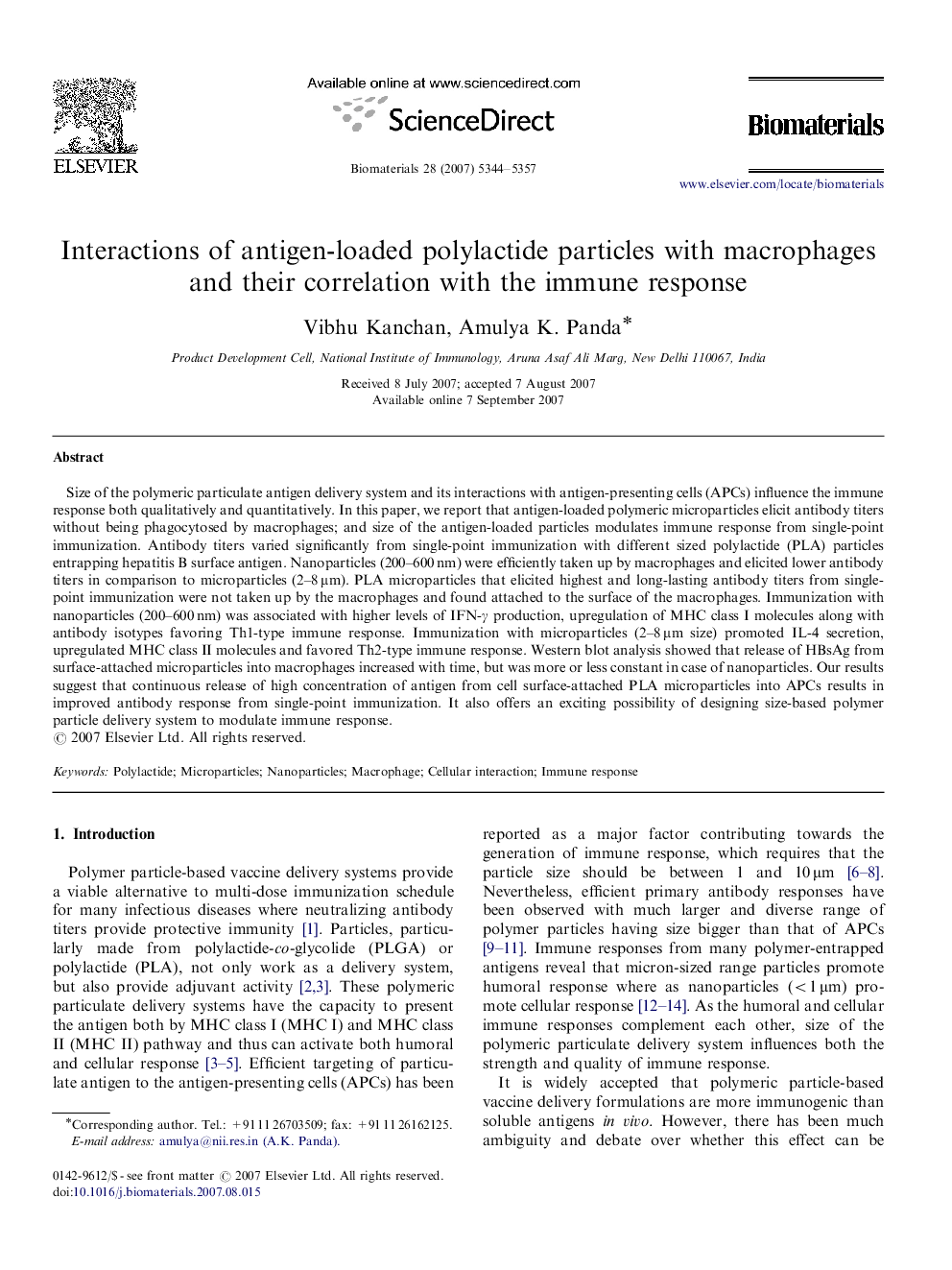| Article ID | Journal | Published Year | Pages | File Type |
|---|---|---|---|---|
| 10477 | Biomaterials | 2007 | 14 Pages |
Size of the polymeric particulate antigen delivery system and its interactions with antigen-presenting cells (APCs) influence the immune response both qualitatively and quantitatively. In this paper, we report that antigen-loaded polymeric microparticles elicit antibody titers without being phagocytosed by macrophages; and size of the antigen-loaded particles modulates immune response from single-point immunization. Antibody titers varied significantly from single-point immunization with different sized polylactide (PLA) particles entrapping hepatitis B surface antigen. Nanoparticles (200–600 nm) were efficiently taken up by macrophages and elicited lower antibody titers in comparison to microparticles (2–8 μm). PLA microparticles that elicited highest and long-lasting antibody titers from single-point immunization were not taken up by the macrophages and found attached to the surface of the macrophages. Immunization with nanoparticles (200–600 nm) was associated with higher levels of IFN-γ production, upregulation of MHC class I molecules along with antibody isotypes favoring Th1-type immune response. Immunization with microparticles (2–8 μm size) promoted IL-4 secretion, upregulated MHC class II molecules and favored Th2-type immune response. Western blot analysis showed that release of HBsAg from surface-attached microparticles into macrophages increased with time, but was more or less constant in case of nanoparticles. Our results suggest that continuous release of high concentration of antigen from cell surface-attached PLA microparticles into APCs results in improved antibody response from single-point immunization. It also offers an exciting possibility of designing size-based polymer particle delivery system to modulate immune response.
